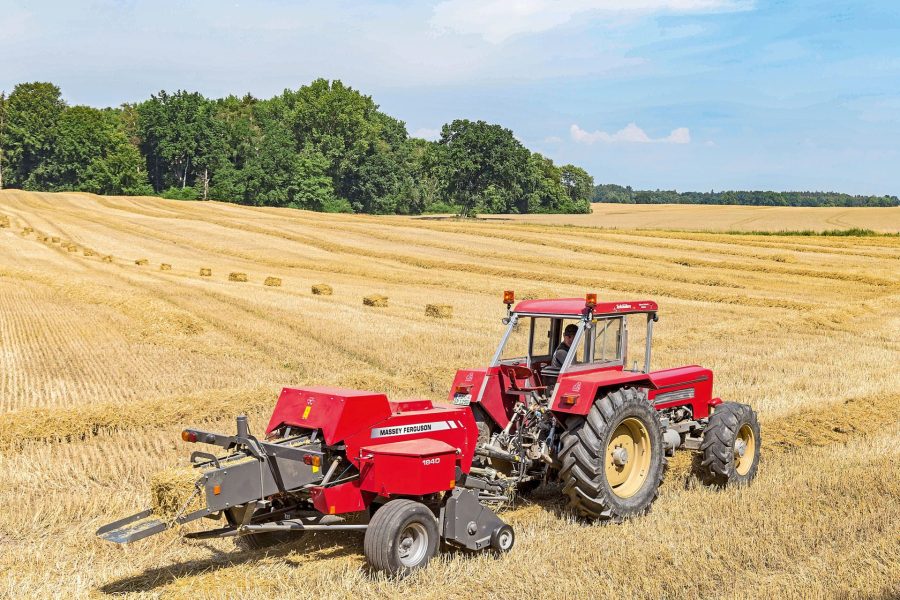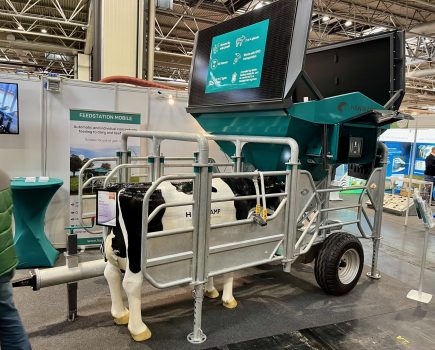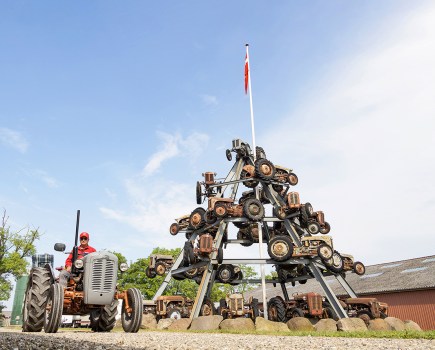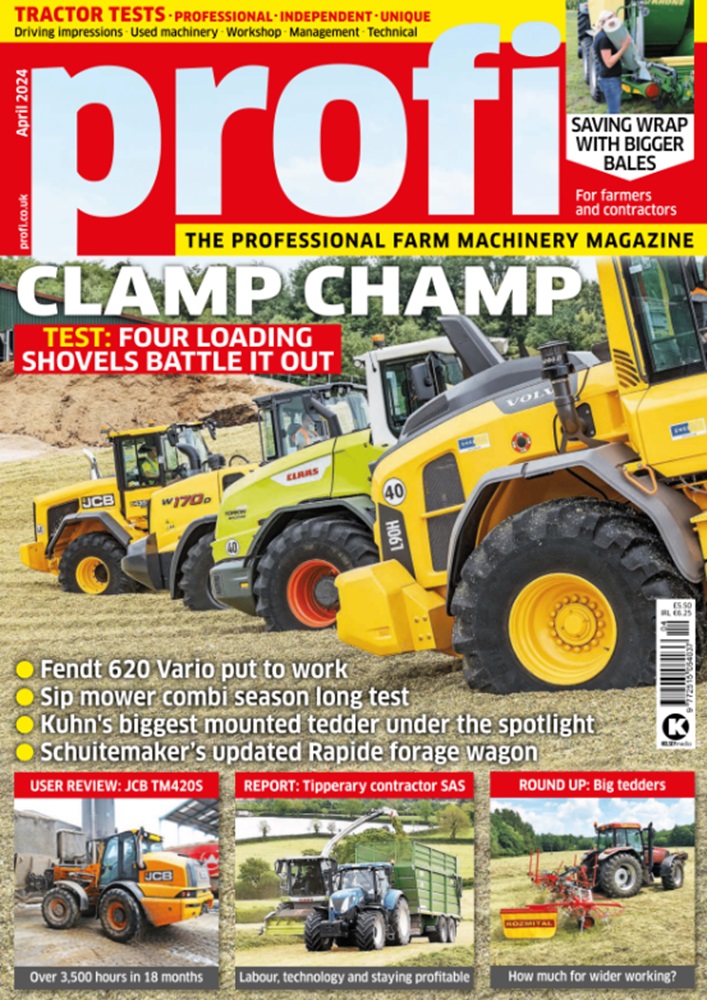DRIVING IMPRESSION: In this age of bigger and bigger machines, there is still demand for high-density small square balers. Massey Ferguson offers the 1840 and is adding the larger 1842S. We find out more
When AGCO bought Lely’s grassland and baler division, small square baler buyers argued the merits of which was better — the offset
Lely or the inline Massey Ferguson? Both had long pedigrees, the inline machine starting out in the 1970s under the Hesston banner and built in the US factory of the same name. And it’s these machines that AGCO has backed with an updated 1800 series.
While there are several machines marketed in North America, Massey Ferguson’s focus in Europe is firmly on the 1840, which produces a 46x36cm bale. However, there will be a bit more choice for the coming season as the 1842S is added. But more on that baler on page 36.
Wide pick-up
The 1840 weighs in at just under 1.6t and is hitched to the drawbar, the height of which can be adjusted to several positions. The same can’t be said of the hose rack or lack of on its drawbar, which we reckon could be improved on. To get the plunger in motion, you need 540rpm running through the wide angle Bondioli and Pavesi driveshaft. The driveline is protected by a slip clutch and shear pins on the flywheel.
The pick-up measures 1.97m (DIN rating), with four rows of 56 tines tasked with gathering the crop. Massey Ferguson uses a cam track controlled pick-up with curved tup tines. As you would expect on a modern machine, the pick-up is raised and lowered hydraulically; in fact only one double-acting spool valve is required to operate the entire baler.
The working height of the pick-up is adjusted by two stops on the right and left that are moved into position with a crank. Solid rubber tyres are used for the fixed gauge wheels to prevent the tine contacting the ground. For a smooth crop flow into the baler, Massey relies on a small-diameter pick-up.
Two large augers, each 330mm in diameter, feed the material to the middle. One of the plus points of the inline design is that the 1840 is relatively narrow for a square baler, with its transport width measuring only 2.60m. Another advantage is that the baler doesn’t need to be offset before starting work; just lower the pick-up and pop on the pto. The only disadvantage in the field is that visibility is not as good as an offset machine’s, and, if you re-bale in the yard out of season, it’s not as straightforward to feed the baler.
For more up-to-date farming news click here and subscribe now to profi for more tractor tests for just £3.99 an issue. Check out the profi YouTube channel for more videos.






